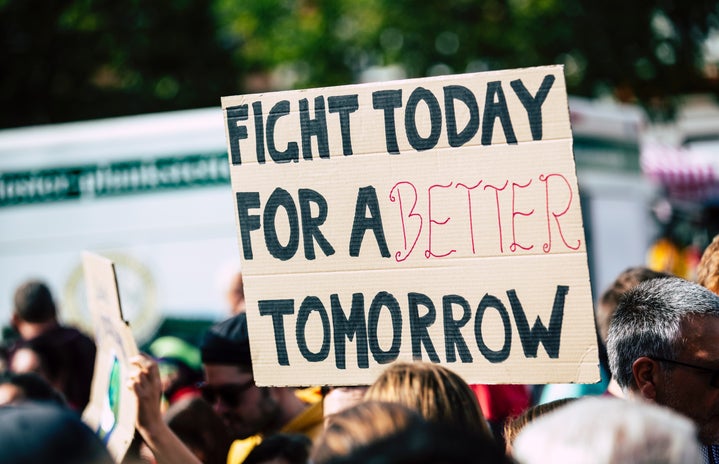From the recent shooting in Atlanta that left six women of Asian descent dead, to the Chinese Exclusion Act of 1982 that banned the immigration of a specific ethnic group, anti-Asian sentiment and violence against Asian-Americans is not a new concept when it comes to history in America. Over the past year, almost 3,800 anti-Asian incidents were reported during the pandemic with a spike in hate crimes by 150% in 16 of the country’s most populous cities. Some have attributed the increase in anti-Asian sentiment to comments made by political leaders that fan the flames of racism towards the Asian community. This includes microaggressions such as the former president popularizing the term “China virus,” and most recently, a U.S. representative criticizing China during a hearing addressing discrimination against Asians.
Actions such as these may be fueling racism by spreading misinformation and placing blame on a specific group of people. Anti-Asian discrimination has long been ingrained in America’s history since the 1800s, but why is it hardly ever talked about? To understand the issue, it’s necessary to recognize Asian-Americans’ position in the racial hierarchy.
Asian-Americans haven’t experienced the same degree of systemic racism as African-Americans, but they also don’t experience privilege in the way white people do. This could be due to the lack of visibility and the belief that Asians don’t face inequality, which has been labeled as the “model minority myth.”
Here are some major events of Asian-American history that are often censored:
People v. Hall 1854 – The California Supreme Court ruled that Chinese could not testify against white citizens on the basis that “a race of people whom nature has marked as inferior, and who are incapable of progress or intellectual development beyond a certain point.”
Chinese Massacre of 1871 – About 500 white and hispanic people entered Old Chinatown and robbed and murdered 18 Chinese men and boys. Eight assailants were convicted but were overturned due to legal technicality. Some sources describe this as the largest mass lynching in American history.
Page Law of 1875 – This law was the first restrictive immigration law in the U.S. that restricted unfree laborers and women for “immoral purposes” from any Oriental country.
Chinese Exclusion Act of 1882 – This was the only law that banned the immigration of a specific ethinic or national group. It suspended Chinese immigration for ten years and declared Chinese immigrants ineligible for naturalization.
Geary Act of 1892 – It reinforced and extended the Chinese Exclusion Act’s ban on Chinese immigration for an additional ten years.
U.S. Annexation of Hawaii 1898 – Citizens of the U.S. and other participants overthrew the Kingdom of Hawaii. The Native Hawaiian people never directly relinquished sovereignty of their land to the United States.
San Francisco Bubonic Plague of 1900-1904 – A Chinese man became the first victim of the bubonic plague and eventually died. This led to the city quarantining Chinese, as the plague was framed as a “racial disease” that excluded those of European descent. During this time, anti-Chinese sentiment was reinforced.
Pacific Coast Race Riots of 1907 – A series of riots against Americans of Asian descent due to racial tension due to an increasing Asian population. This led to violence and destruction of property.
Immigration Act of 1924 – Set a limit to the number of immigrants allowed entry into the U.S. but completely excluded all immigration from Asia.
Lum v. Rice 1927 – The United States Supreme court case that approved the exclusion by race of Chinese-Americans from school. It effectively approved exclusion of minority children.
Japanese Internment 1942-1946 – Now considered one of the U.S.’ biggest civil rights violations in the 20th century. Executive order demanded the relocation of Americans of Japanese descent to assembly centers. They were given six days to dispose of everything they could not carry.
Magnuson Act of 1943 – It repealed the Chinese Exclusion Act, allowing 105 Chinese per year.
Murder of Vincent Chin 1982 – A Chinese-American that was beat to death by two white men. They blamed him for the decline in automotive manufacturing as they believed he was Japanese. His death caused outrage as his murderers only received a $3,000 fine and three years of probation due to the fact that the judge ruled the murder as an outcome of a bar fight.
Violence and laws encouraging the discrimination of Asian-Americans has always been included in American history, but it’s just now being discussed.
Asian-Americans deal with exclusion from leadership, media, data and history that often leads to them being overlooked. From the beating of Danny Yu Chang that left him partially blind, to the assault of Vicha Ratanapakdee that eventually led to his death, so many Asian-Americans are facing a recent surge of violence and this issue is not being talked about enough.
In order to progress, we need to recognize inequality and casual racism, and be actively against it. This includes taking the steps and practicing anti-racism through advocacy for Asian-American communities.
Steps to take:
Learn: Educate yourself on the history of Asian-Americans to understand the harm caused and acknowledge the struggles faced.
Be an active part of the conversation: Be an advocate and show support for your Asian peers by checking in on their well-being. This can also include being physically active such as taking intervention training when witnessing hate incidents.
Support local communities and amplify Asian-American voices: If you can’t get involved, donate. Here’s a list of 61 ways to give back to Asian communities. The pandemic disproportionately hit Asian businesses hard, so show support for your local Asian business.



